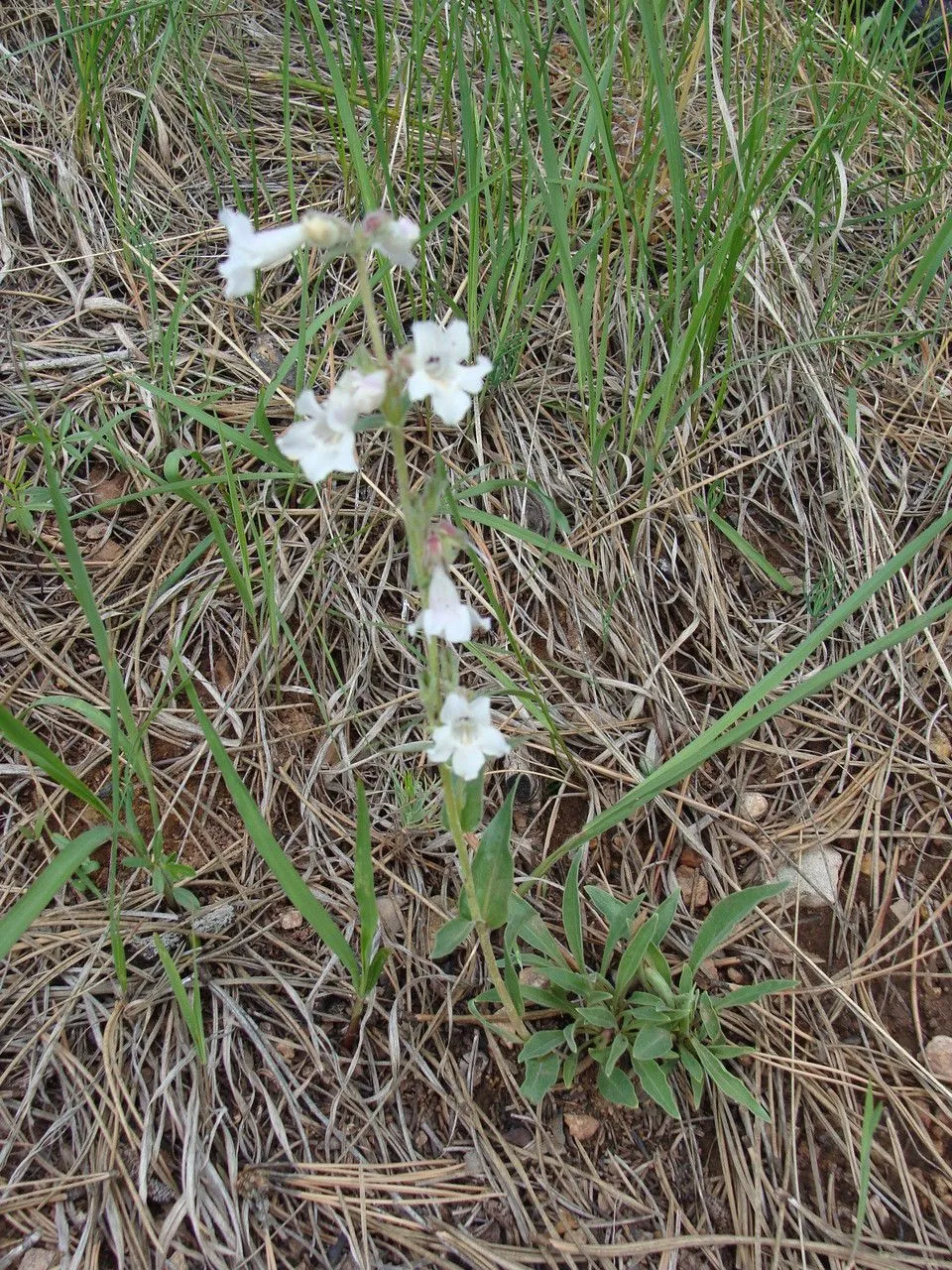
Author: Nutt.
Bibliography: Gen. N. Amer. Pl. 2: 53 (1818)
Year: 1818
Status: accepted
Rank: species
Genus: Penstemon
Vegetable: False
Observations: WC. & C. Canada to NW. & C. U.S.A.
White Beardtongue (Penstemon albidus)
The White Beardtongue, scientifically known as Penstemon albidus, is a captivating perennial that adds a touch of delicate charm to its native habitats. Described and classified in the early 19th century by Nuttall in Gen. N. Amer. Pl. 2: 53 (1818), this plant has a rich history of interest among botanists and gardeners alike.
Belonging to the Plantaginaceae family, Penstemon albidus is admired for its slender, tube-shaped flowers that exhibit a pure white hue, which contrasts beautifully against its green foliage. These blossoms typically emerge in clusters and are known for attracting a variety of pollinators, including bees and butterflies, making it a delightful addition to any garden focused on supporting local ecosystems.
The geographical range of the White Beardtongue spans widely across North America, reaching from Western and Central Canada through to the Northwestern and Central regions of the United States. This distribution indicates the plant’s adaptability to various climates and soil conditions, although it generally thrives best in well-drained soils and full sunlight.
In the wild, White Beardtongue can often be found in prairies, open woodlands, and along rocky slopes, where it contributes to the natural beauty and biodiversity of these landscapes. Gardeners who seek to cultivate this species should aim to mimic these conditions to ensure robust growth and flowering.
Penstemon albidus is not only noted for its aesthetic appeal but also for being relatively easy to care for, making it an excellent choice for both novice and experienced gardeners. Its resilience against drought and its minimal maintenance requirements further add to its desirability in sustainable gardening practices.
The White Beardtongue’s serene elegance, ecological benefits, and historical significance continue to enrich our knowledge and appreciation of North America’s native flora.
Eng: white beardtongue, white penstemon, red-line beardtongue, whiteflower beardtongue
Fra: penstémon blanchâtre
En: White beardtongue, White penstemon, Red-line beardtongue, Whiteflower beardtongue
Fr: Penstémon blanchâtre
Taken Jun 26, 2019 by Lalah Godwin (cc-by-sa)
Taken Jul 2, 2022 by Mary Lou Sagaser (cc-by-sa)
Taken Aug 16, 2011 by EOL − RT Hawke (cc-by-nc)
Taken Jun 12, 2013 by EOL − corbscheng (cc-by-nc)
Taken Jun 4, 2020 by Christine stewart (cc-by-sa)
Taken Dec 3, 2013 by EOL − Daniel Carter (cc-by-nc)
Taken Nov 5, 2014 by EOL − Steve Wagner (cc-by-nc)
Taken Jun 12, 2013 by EOL − corbscheng (cc-by-nc)
© copyright of the Board of Trustees of the Royal Botanic Gardens, Kew.
Growth habit>: Forb/herb
Family: Myrtaceae Author: (F.Muell.) K.D.Hill & L.A.S.Johnson Bibliography: Telopea 6: 402 (1995) Year: 1995 Status:…
Family: Rubiaceae Author: Pierre ex A.Froehner Bibliography: Notizbl. Bot. Gart. Berlin-Dahlem 1: 237 (1897) Year:…
Family: Sapindaceae Author: Koidz. Bibliography: J. Coll. Sci. Imp. Univ. Tokyo 32(1): 38 (1911) Year:…
Family: Asteraceae Author: A.Gray Bibliography: Pacif. Railr. Rep.: 107 (1857) Year: 1857 Status: accepted Rank:…
Family: Fabaceae Author: Medik. Bibliography: Vorles. Churpfälz. Phys.-Ökon. Ges. 2: 398 (1787) Year: 1787 Status:…
Family: Aspleniaceae Author: (Cav.) Alston Bibliography: Bull. Misc. Inform. Kew 1932: 309 (1932) Year: 1932…